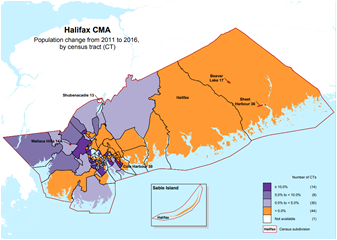RI_631
Type of resources
Available actions
Topics
Keywords
Contact for the resource
Provided by
Formats
Representation types
Update frequencies
status
-

The Census Program Data Viewer (CPDV) is an advanced web-based data visualization tool that helps make statistical information more interpretable by presenting key indicators in a statistical dashboard. It also enables users to easily compare indicator values and identify relationships between indicators.
-
Historical finds of Fenusa pumila
-

Reference maps illustrate the location of census standard geographic areas for which census statistical data are tabulated and disseminated. The maps display the boundaries, names and unique identifiers of standard geographic areas, as well as physical features such as streets, railroads, coastlines, rivers and lakes. Reference maps include: Standard Geographical Classification (SGC) Census tracts Federal electoral districts
-
This service shows the proportion of average total income of households which is spent on shelter costs by census subdivision. The data is from the Census Profile, Statistics Canada Catalogue no. 98-316-X2016001. Shelter-cost-to-income ratio is calculated for private households living in owned or rented dwellings who reported a total household income greater than zero. Private households living in band housing, located on an agricultural operation that is operated by a member of the household, and households who reported a zero or negative total household income are excluded. The relatively high shelter-costs-to-household income ratios for some households may have resulted from the difference in the reference period for shelter costs and household total income data. The reference period for shelter cost data is 2016, while household total income is reported for the year 2015. As well, for some households, the 2015 household total income may represent income for only part of a year. For additional information refer to the 2016 Census Dictionary for 'Total income' and 'Shelter cost'. To have a cartographic representation of the ecumene with this socio-economic indicator, it is recommended to add as the first layer, the “NRCan - 2016 population ecumene by census subdivision” web service, accessible in the data resources section below.
-
This service shows the median household after-tax income in 2015 for Canada, by 2016 census subdivision. The data is from the Census Profile, Statistics Canada Catalogue no. 98-316-X2016001. After-tax income - refers to total income less income taxes of the statistical unit during a specified reference period (for additional information refer to Total Income – 2016 Census Dictionary and After-tax Income – 2016 Census Dictionary). The median income of a specified group is the amount that divides the income distribution of that group into two halves. Census subdivision (CSD) is the general term for municipalities (as determined by provincial/territorial legislation) or areas treated as municipal equivalents for statistical purposes (e.g., Indian reserves, Indian settlements and unorganized territories). Municipal status is defined by laws in effect in each province and territory in Canada. To have a cartographic representation of the ecumene with this socio-economic indicator, it is recommended to add as the first layer, the “NRCan - 2016 population ecumene by census subdivision” web service, accessible in the data resources section below. Besides the variable described here, the dataset contains the id, name, type, province, population, land area and the number of private households for each census subdivision. If a value is null, it could be because it is not available for a specific reference period, it is not applicable, it is too unreliable to be published or it is suppressed to meet confidentiality requirements of the Statistics Act. To find out the exact reason, refer to the source data from Census in the resources below.
-

The 2023 Census Subdivision Boundary File depicts the boundaries of all 5,173 census subdivisions (CSDs), which combined, cover all of Canada. It contains the unique identifier (UID), name and type, as well as the UIDs, names and types (where applicable) of selected higher geographic levels. The 2023 Census Subdivision Boundary File is portrayed in Lambert conformal conic projection (North American Datum of 1983 [NAD83]). The 2023 Census Subdivision Boundary File is available as a national file.
-
This service shows the percentage of population aged 25 to 64 years in private households with a postsecondary certificate, diploma or degree by census division, 2016. The data is from the Census Profile, Statistics Canada Catalogue no. 98-316-X2016001. This data pertains to the population aged 25 to 64 years in private households by the highest level of education that a person has successfully completed. Persons with a post-secondary certificate, diploma or degree includes those with an apprenticeship or trades certificate or diploma; a college, CEGEP or other non-university certificate or diploma; a university certificate or diploma below bachelor level or a university certificate, diploma or degree at bachelor level or above. For additional information refer to the 2016 Census Dictionary for ' Highest certificate, diploma or degree'. For additional information refer to the 2016 Census Dictionary for ' Highest certificate, diploma or degree'. To have a cartographic representation of the ecumene with this socio-economic indicator, it is recommended to add as the first layer, the “NRCan - 2016 population ecumene by census division” web service, accessible in the data resources section below.
-

A thematic map shows the spatial distribution of one or more specific data themes for standard geographic areas. Thematic maps include: Population Age Income Language of work Instruction in the official minority language
-
This service shows the percentage of the population who reported an Aboriginal identity by census subdivision. The data is from the Census Profile, Statistics Canada Catalogue no. 98-316-X2016001. Aboriginal identity refers to whether the person identified with the Aboriginal peoples of Canada. This includes those who are First Nations (North American Indian), Métis or Inuk (Inuit) and/or those who are Registered or Treaty Indians (that is, registered under the Indian Act of Canada) and/or those who have membership in a First Nation or Indian band. Aboriginal peoples of Canada are defined in the Constitution Act, 1982, section 35 (2) as including the Indian, Inuit and Métis peoples of Canada. Users should be aware that the estimates associated with this variable are more affected than most by the incomplete enumeration of certain Indian reserves and Indian settlements in the 2016 Census of Population. For additional information refer to the 2016 Census Dictionary for 'Aboriginal identity'. To have a cartographic representation of the ecumene with this socio-economic indicator, it is recommended to add as the first layer, the “NRCan - 2016 population ecumene by census subdivision” web service, accessible in the data resources section below.
-
This service shows the ratio of persons aged 0 to 14 and 65 and over (children and seniors) versus persons aged 15 to 64 (working-age) by census division. The data is a custom extraction from the 2016 Census - 100% data. This data pertains to the total population by age. 'Age' refers to the age at last birthday before the reference date, that is, before May 10, 2016. For additional information refer to 'Age' in the 2016 Census Dictionary. For additional information refer to 'Age' in the 2016 Census Dictionary. To have a cartographic representation of the ecumene with this socio-economic indicator, it is recommended to add as the first layer, the “NRCan - 2016 population ecumene by census division” web service, accessible in the data resources section below.
 Arctic SDI catalogue
Arctic SDI catalogue